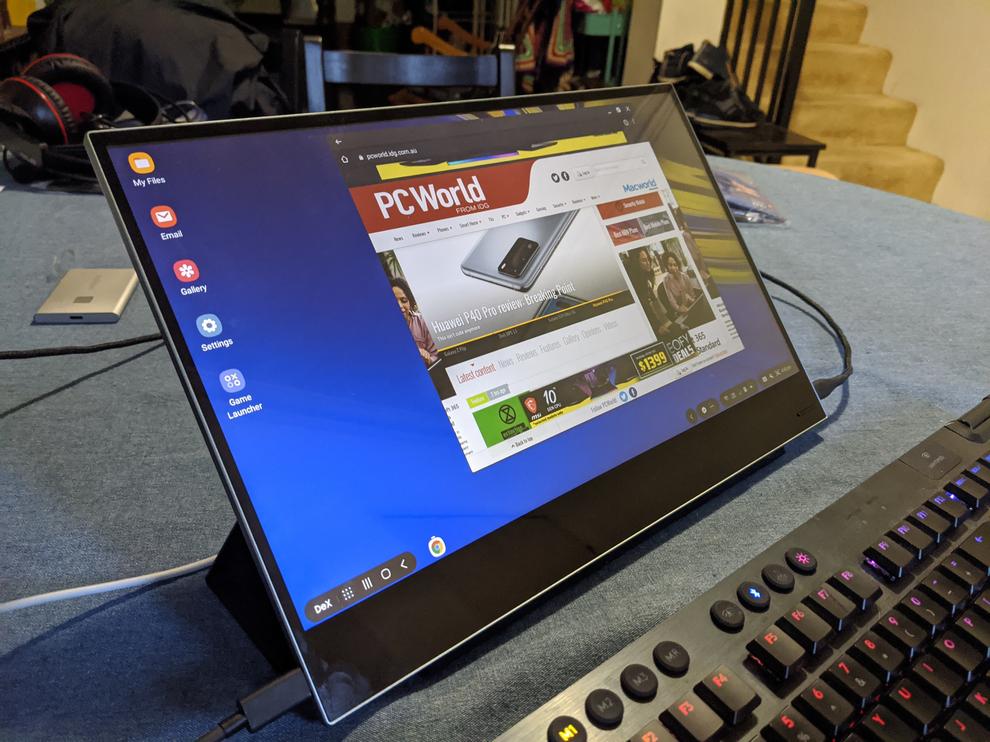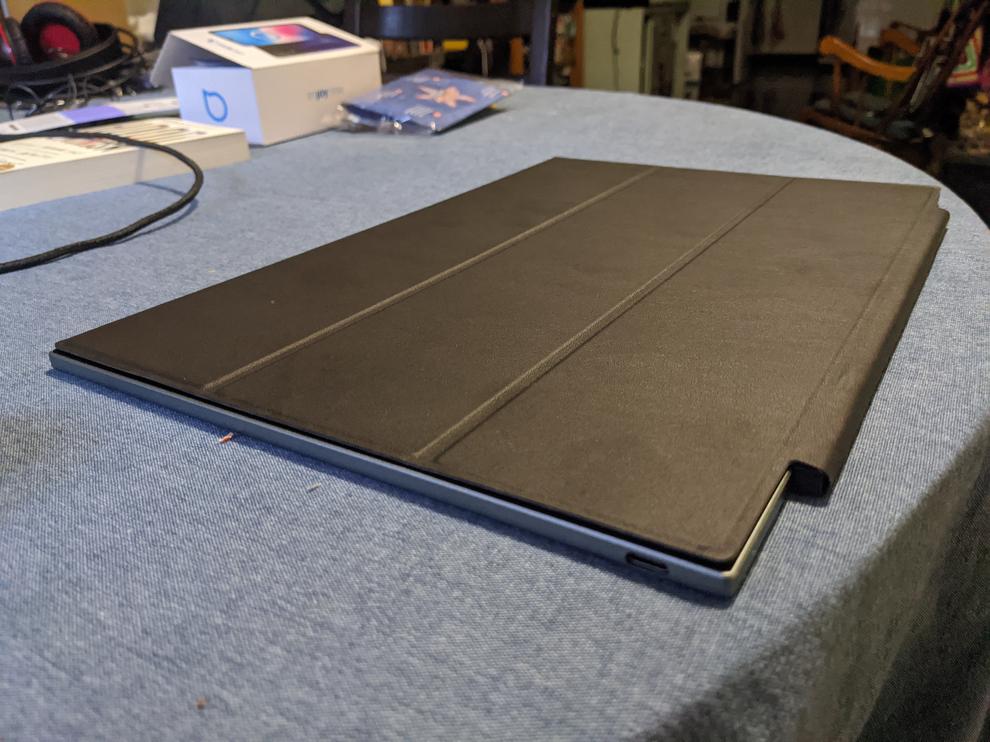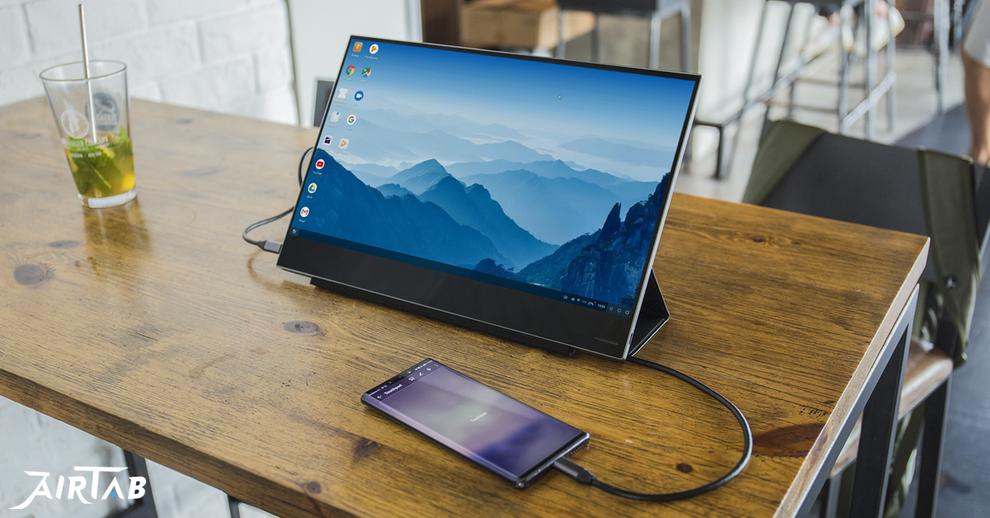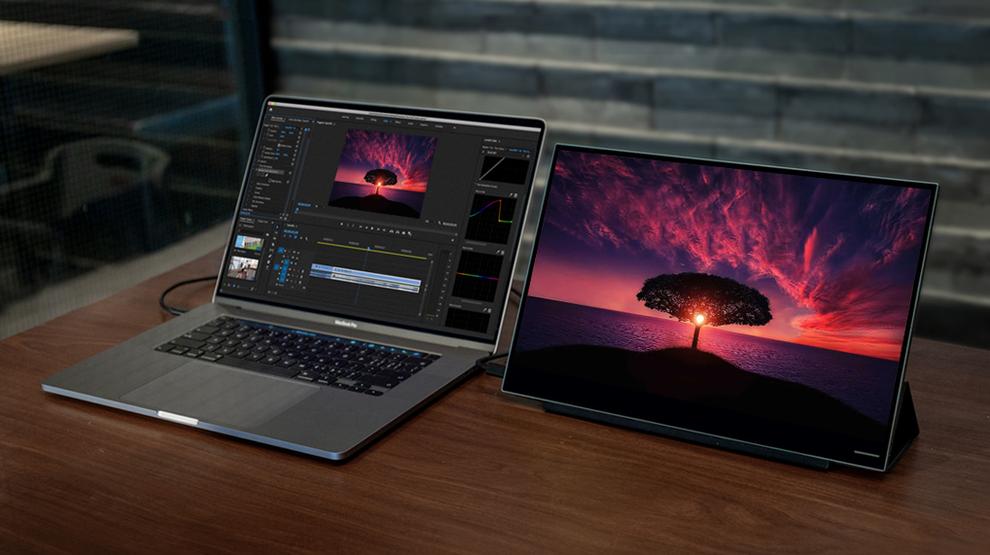AirTab review: A few cut corners make for a thrifty piece of tech
- 22 June, 2020 14:43

Should you buy the AirTab?
If you’re lucky enough to already know for sure whether the AirTab can meet your needs and don’t mind a dash of amateurish hardware design, there’s a faustian bargain to be had here.
The AirTab is competitively-priced and eminently-capable but lacks the pomp, circumstance and dedicated portability found elsewhere. If those are corners you’re happy to cut, there’s a good chance this will fit the portable monitor niche you’re looking to fill. Otherwise, it’s something of a hard sell.
The AirTab undercuts its big-brand competition without too much trouble but it won’t take you long to see and feel the difference either.
Specs
Screen size: 15.6-inches
Resolution: 1920 x 1080
Ports: USB Type-C (x2)
Refresh rate: 60Hz
Response time: 4ms
Color Gamut: 72% NTSC
Dimensions: 355mm x 245mm x 4.9mm
Weight: 500g
Price when reviewed
The AirTab is priced at US$219 on Kickstarter, though early bird pricing does bring that down to US$199 (while stocks last).
Design and Performance
Currently crowdfunding on Kickstarter, the AirTab is billed as a lightweight third-party accessory that lets you easily give your phone, tablet, laptop or Nintendo Switch an upgrade via a bigger or secondary screen. It’ll even play nice with DeX-capable Samsung smartphones - which was the use-case I was most excited to test here.
 Credit: Fergus Halliday
Credit: Fergus Halliday The setup here is fairly simple and the form-factor is akin to one of the larger Apple iPad Pros. The AirTab is essentially a massive screen with a magnetically attached cover. This accessory can be folded over the back of the portable display when needed to form a functional but crude support structure. The material design here feels cheap but it gets the job done well enough, so long as the surface you’re using it on is suitably level and clean.
The front of the AirTab touts a single button that’s used to adjust the brightness. However, annoyingly, there’s no clear indicator of what mode the device is in at any time. You’re left to squint and guess.
 Credit: Fergus Halliday
Credit: Fergus Halliday The AirTab has two ports on it. Both are USB Type-C. One is on the bottom left edge of the display. The other sits parallel to it. One of these is used for charging. The other handles video input. Again - which is which is not really communicated, which can make setting up the AirTab a little vexing.
Tested for gaming via a smartphone, the AirTab worked like a charm but was let down by the fact that the audio still relied on my smartphone’s speakers. This meant that in-game audio often sounded pretty disconnected from what was happening on-screen.
My time with the AirTab also drew attention to one of USB-C’s biggest drawbacks: inconsistency. Some troubleshooting was often involved in getting my various devices to connect to the portable monitor and sometimes a cable that would work for one device wouldn’t work for others. I wasn’t able to get the Nintendo Switch to connect to the monitor at all and some cables would support Samsung’s DeX mode while others wouldn’t.
Update - after publication, the team behind the AirTab got in touch to clarify that the prototype unit I was sent doesn't support the Switch but the full product will.
After spending a bit of time messing with it. I suspect that the best use cases for the AirTab are likely going to be situations where you need to give your laptop a second screen’s worth of real estate to work with and have absolute confidence that the ports and cables involved in that maneuver are going to be up to scratch.
Spending $200 on a portable monitor is one thing but spending $200 on a portable monitor that might not even do the thing you want or need it to do is another.
 Credit: AirTab
Credit: AirTab It doesn’t help that the limitations inherent in the design of AirTab are hard to overlook. It doesn’t have any sort of standalone battery, so you’re only able to use this near a powerpoint. This harsh reality places a few annoying terms and conditions in the way of making the AirTab the kind of gadget you want to carry around with you.
The Bottom Line
Only a few years ago, the use cases for a product like this would have been far too limited for anyone but the team behind the AirTab to tackle. However, that’s not really the case anymore.
These days, brands like ASUS and Lenovo are offering portable monitor solutions that are more polished and technically proficient. Unfortunately, most of these options are also more expensive.
Inevitably, that raises the question: what’s the catch? Is the gamble worth it?
Ultimately, the answer to these questions is the expected. The AirTab is half the price of the alternatives but the drawbacks and shortcomings aren’t hard to spot. It falters on design but there’s a good chance that it’ll do what you need it to do. Of course, a good chance isn’t a guarantee.
 Credit: AirTab
Credit: AirTab 




